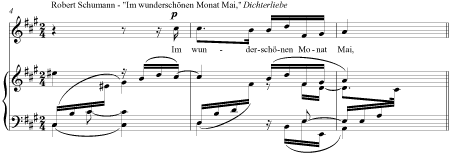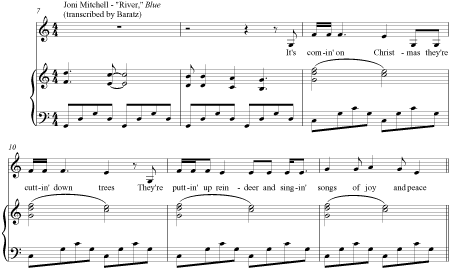Cassavetes's movies are marked by inarticulate characters, long takes, and rough technique. Feldman's music reveals its maker in at least one way, its myopic interest in each sound. Its striking sensuality often wins fans, even if they admittedly can't make any sense of the music. The visceral rawness of Cassavetes's work usually isn't as endearing.
Audiences often find a “rambling” quality in their work. Cassavetes let scenes run as long as he felt necessary. The suicide scene in A Woman Under the Influence is unrelenting. Similarly, Piano and String Quartet plays on each fragment for calmly extended periods. The proportions of both works are nothing like a Hollywood drama or a Classical sonata. Cassavetes's insistence on honest emotions led him to eschew simplified narratives. Feldman similarly refused to “push the sounds around.” These unusual aesthetics obscure the presence of form, but they don't deny it. Though detractors may insist their work is formless, both derive forms from the characteristics of their content.
Opening Night, at its surface, is the story of a new play moving from New Haven to its Broadway premiere. The production faces problems as its lead must reconcile her own problems with aging with those of her character. Tracing this idea more closely, one finds women's reactions to getting older to be central to the film. Viewed through this lens, just about every scene provides a different perspective on this issue. No age group is left unexamined, from the 18-year-old fan who gets killed to the 65-year-old playwright. While the film's pacing has a certain “lumpiness” that can turn off a lot of viewers, its attention to this central problem is basically unwavering.
Palais de Mari focuses on spare pitches, slowly drawn out of the instrument. The near-constant pedal draws attention to their decay, making the sounds feel both frozen in time and slipping away from it (an elegant depiction of the palace ruins of the title). In m. 18, an unusually large spacing interrupts the initial sense of stasis. The search for a balance between the initial stasis and this startling gesture creates a tension which lasts until the very end of the piece. Later fragments are heard in terms of how they relate to this problem, not in harmonic terms, but sonic ones: density, duration, and decay.

Jonathan Kramer, in The Time of Music, characterizes Feldman's music as extremely “vertical.” That is, his music is one long moment divorced from our usual perception of time. However, his dramas of sonorities reach somewhere between “moment form” and “vertical time.” The sections of similar sonorities in Feldman's late music beg to heard as unadulterated pieces of beauty (vertically), but the way they're joined together is not without causation. He wants his audiences to take away a keener appreciation of sound, but not through a Cagean all-inclusiveness. Instead, listeners should sharpen their ears to the ways that one sound connects to another.
Cassavetes approached emotion in a similar way. His unconventionally long scenes have a child-like fascination with the interplay of emotions. They refuse to measure time into neat parcels, instead letting everything take as long as it needs to. This intense focus at times negates the existence of all other moments (just as Feldman's sounds want to be “left alone”). Here too, the individual pieces are intriguing in their own way, but the greater experience comes from tying them all together.
Form, in the work of Feldman and Cassavetes, evolves out of the individual qualities of their materials. How one perceives them as emotions, or as sounds, takes precedence over higher-level divisions (character arcs and harmonic progressions). This “phenomenological form” can usually be spotted by a series of irregularly-sized episodes, linked through a single organizing principle. This form is highly elastic, always letting proportions be defined by the demands of the content. Though the priorities of these artists differ from most of their contemporaries, close examination reveals a highly rigorous technique. Though their work is often labeled as “amateurish,” it is only because Feldman and Cassavetes have the utmost sensitivity for the materials of their craft.

